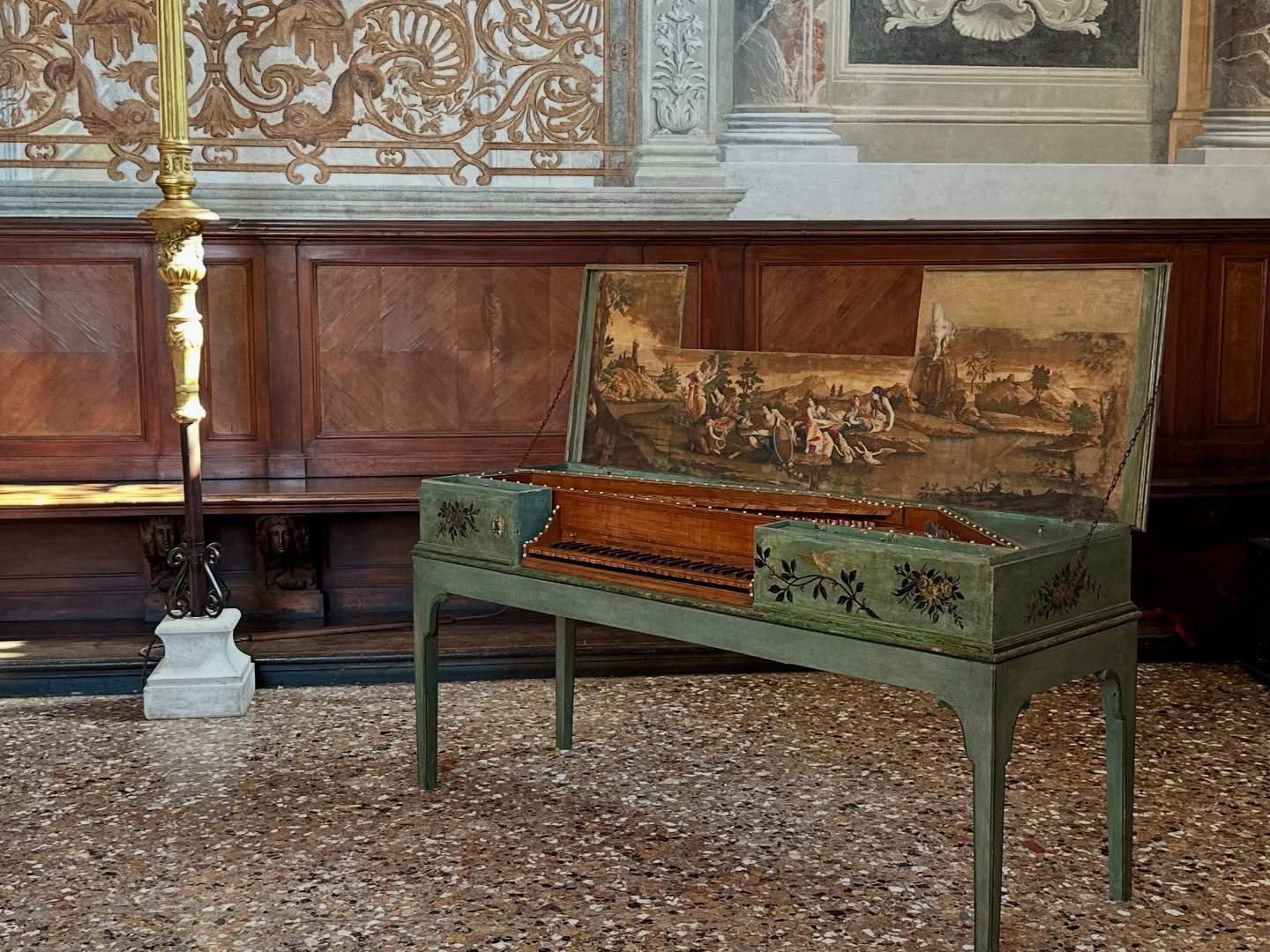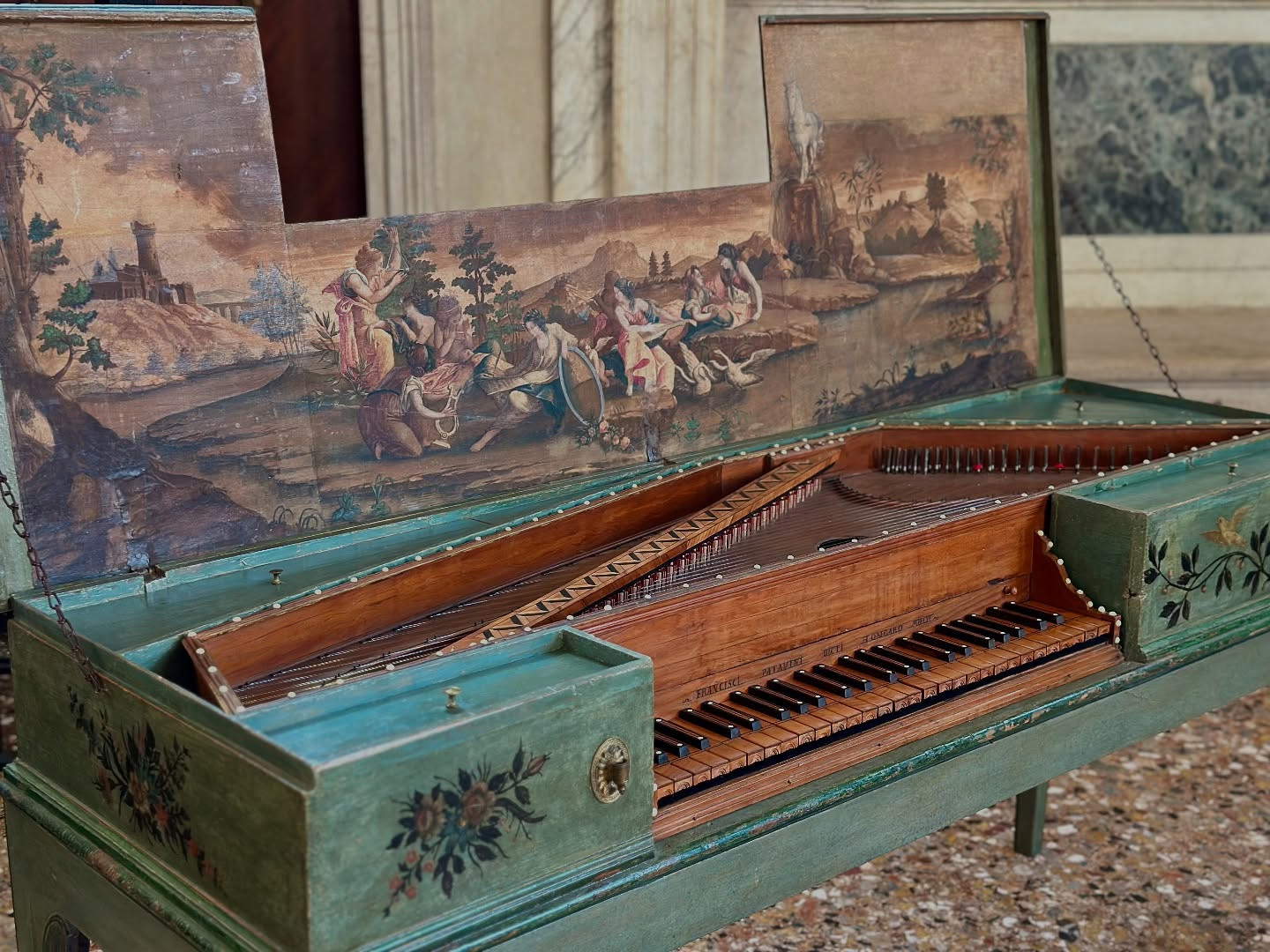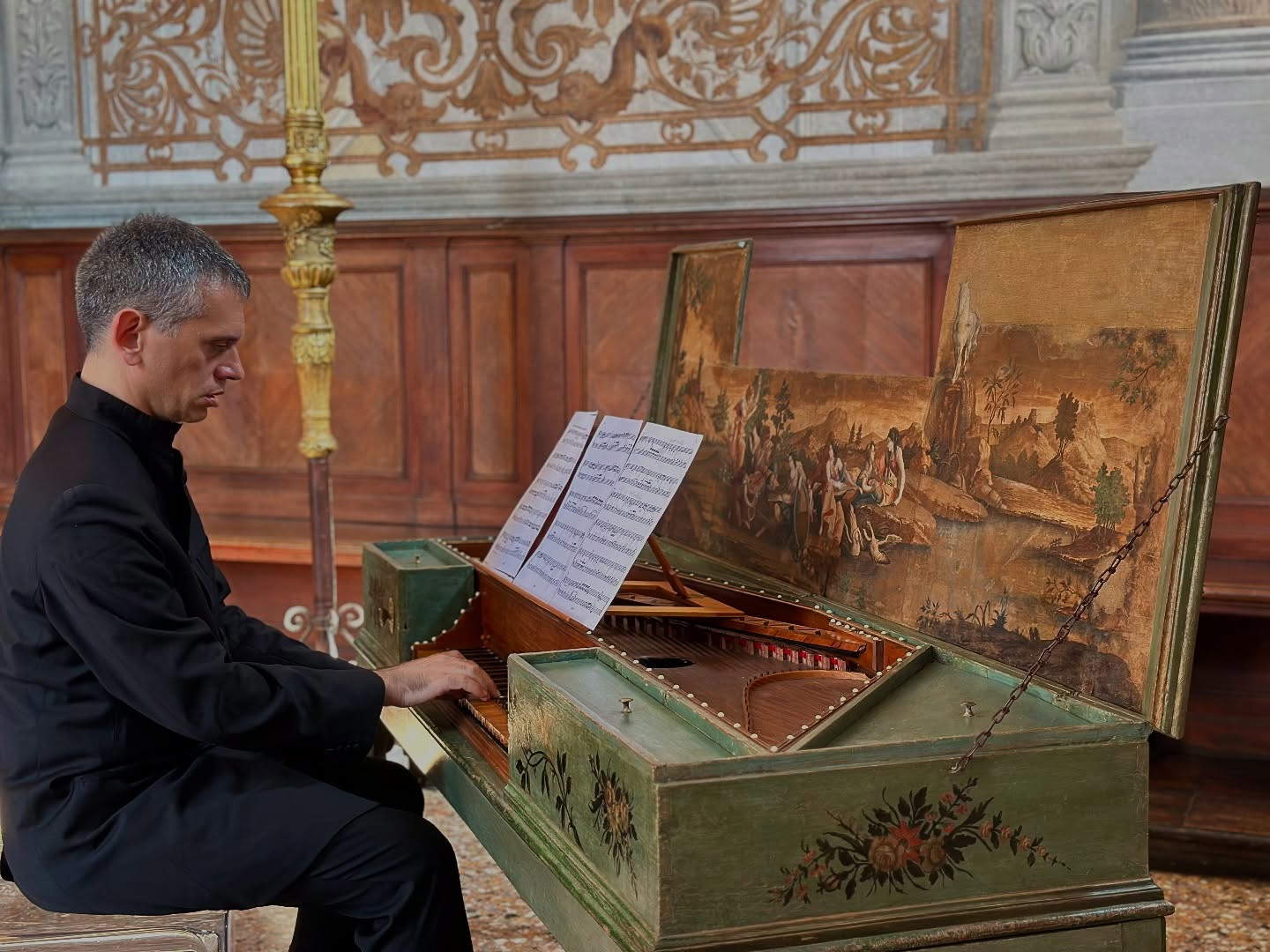The spinet of the Correr Museum in Venice made around 1552 by Franciscus Patavinus has been restored and now, after more than two centuries, it is playing again. The restoration was made possible thanks to the support of Louis Vuitton, in an intervention that is part of the artistic heritage enhancement activities of the Fondazione Musei Civici di Venezia, supervised by Graziano Bandini with the collaboration of the Arvedi Laboratory for Non-Invasive Diagnostics (CISRIC) of the University of Pavia.
Belonging to the harpsichord family, the spinet is distinguished by its small size and a more intimate sonority, intended for private settings. Widespread between the late 15th and 17th centuries, it was in fact used in aristocratic and cultured settings and was often played by women. The Venetian exemplar, made by Franciscus Patavinus and dated to the mid-16th century, is a rare case of almost complete preservation. The attribution was confirmed by a comparison with a virginal, a small spinet widespread in England in Elizabethan times, preserved at the Conservatoire Royal de Musique in Brussels. A harpsichord preserved at the Deutsches Museum in Munich is also attributed to Patavinus. The inscription “basi” engraved on the left side of the keyboard is also u element of authentication.
This precious testimony to the musical culture of the mid-sixteenth century was acquired by the Correr Museum in the early twentieth century and studied in detail in 1995 by specialist Grant O’Brien. Only with the recent intervention initiated in 2021 and supervised by Graziano Bandini has the spinet regained full functionality.


The restoration focused on the nineteenth-century cabinet that holds it, while the sixteenth-century instrument was found to be in exceptional condition: the bridges were still in their original position and the soundboard had no reworkings. To restore musical functionality, the salterelli, or small wooden levers that allow the frets to pluck the strings, were reconstructed through a careful technical intervention that restored the instrument to its original voice. The strings were reinstalled, while the original salterelli were carefully preserved. The intervention was also an opportunity to apply historical reconstruction methods, based on the use of pre-metric units of measurement such as ounces and Venetian feet.
“The return to the sound of this instrument is not just a conservative gesture,” stressed Andrea Bellieni, curator of the Correr Museum, “but a way to reactivate a living memory. Giving back a voice to an ancient object means relocating it in its original context: not as a mere artifact, but as an active witness of the culture that generated it.”
“The extraordinary preservation of the spinet,” said Graziano Bandini, “constitutes its uniqueness. To find the instrument intact in its original structure is a truly rare event in the panorama of ancient musical instruments.”
The Correr Museum, part of the Civic Museums of Venice system, now holds a collection of about seventy historical instruments, thanks to donations, bequests and acquisitions. Among the most notable pieces are, in addition to the Patavinus spinet, the organ made by Lorenzo Gusnasco da Pavia in 1494, a masterpiece of late 15th-century organ-making art.

 |
| Restored thanks to Louis Vuitton the spinet of the Correr Museum in Venice. It has returned to play after more than two centuries |
Warning: the translation into English of the original Italian article was created using automatic tools. We undertake to review all articles, but we do not guarantee the total absence of inaccuracies in the translation due to the program. You can find the original by clicking on the ITA button. If you find any mistake,please contact us.